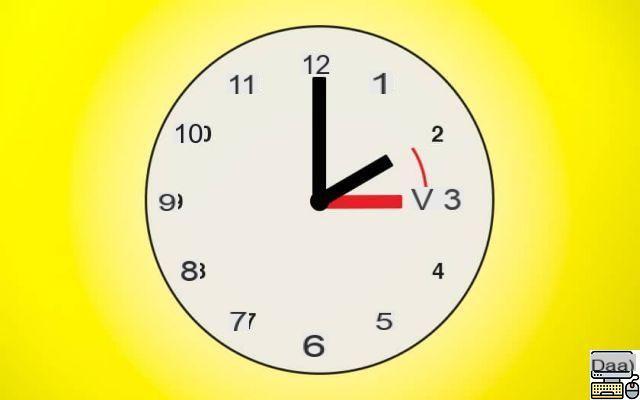- 2021 daylight saving time change date
- Why do we change the clock?
- Is the time change bad for your health?
- When is the end of the time change?
- Comments
The date of the summer time change is set for Sunday March 28, 2021 at 2 a.m.: the hands will then have to be moved forward one hour (i.e. one hour less sleep during this night). The time change was originally motivated by energy savings, but a European vote declares the end of the time change from 2021, except that the Covid has been there...

The daylight saving time change is approaching. Get ready to put your clocks forward one hour on the weekend of March 27-28: we switch to summer time on Sunday 28 at 2 a.m.! Here's everything you need to know about the time change.
2021 daylight saving time change date

The next time change to switch to DST will be on Sunday, March 28, 2021 : at 2 a.m. in the early morning, it will actually be 3 a.m.
Since 1996, the time change dates have been the same throughout the European Union. We therefore switch simultaneously to summer time on the same day at the same time in the 27 Member States. Who have agreed to change time twice each year, with a transition to summer time fixed since the last Sunday of March. The changeover time, 2 a.m. on a Sunday, was chosen to minimize any risk of disruption to transport and telecommunications.
- Also read: will your smartphone switch to summer time automatically?
Why do we change the clock?
In Spain, the first transition to summer time took place on June 14, 1916, and lasted until 1945 at the end of the Second World War, when we returned to constant time. The idea, at the outset, is to reduce energy waste at a time when lighting is one of the most important energy consumption items. Moving back or forward one hour thus makes it possible to vary lighting needs, in particular in offices and businesses which have legal opening and closing times.
The return of the time change took place in 1976 in the wake of the oil crisis of 1973. At the time, public and private lighting was still mainly based on very energy-consuming incandescent lamps. However, despite the recovery, and the switch to more energy-efficient devices (LED lighting, disappearance of filament lamps and energy consumption indices for a wide variety of devices), the time change has persisted. And it was even harmonized in the European Union in the early 2000s.
However, according to a study by ADEME, the more widespread the use of products and devices with high energy efficiency, the less the benefits of the device are real. The agency notes that savings are still made on lighting, they are limited. A joint study with EDF, ADEME and the Ministry of Industry concluded that it was possible to save 0,015% of total energy consumption in 2014 thanks to summer time. In other words: not much.
Is the time change bad for your health?
This is a recurring criticism of the time change: it would be bad for your health. Several recent studies show that advancing the clock in the spring can temporarily reduce sleep time. This would increase the number and severity of heart attacks for at least seven days after the time change. Beyond that, there would be more work and traffic accidents.
In Spain, the return to winter time leads to a peak in accidents for about a week, especially at the end of the day when the excess of accidents reaches up to +47% for pedestrians. Beyond that, it poses problems in telecommunications and international transport. So for a long time it has been questioned.
A report submitted to the Senate in 1997 estimated that “the advantages announced or expected from the half-yearly change of time are not significant enough to compensate for the disadvantages felt by the populations”. The question of its abolition has been on the table regularly for several years.
When is the end of the time change?
Between September 2018 and March 2019, a major public consultation asked Europeans to vote for or against the change of time. This consultation resulted in a true plebiscite in favor of the abolition of the change of time twice a year. The Spanish consultation, for example, received 2.103.999 responses with “83,71% of respondents [who voted] to put an end to the change of time twice a year”.
Similar consultations elsewhere in Europe have overwhelmingly produced similar results. As a result, the question was examined by MEPs who decided on Tuesday March 26, 2019 to remove the seasonal time change from 2021. Nevertheless, the text specifies that “Member States will retain the right to decide on their time zone”. A majority of Spaniards supported maintaining summer time.
However, the health crisis has completely turned this calendar upside down. For the moment, the end of the change is put on hold and nothing has finally been approved at the start of the year. For a decision to be made, it will probably be necessary to wait until the end of 2021, at the very least.


























